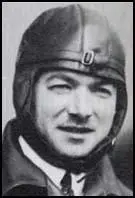Artois-Loos Offensive

In May, 1915, Henri-Philippe Petain and 9th French Army launched an attack at Artois. Petain initially made good progress but was unable to take the main objective, Vimy Ridge. On 25th September Anglo-French forces launched another offensive at Artois and at nearby Loos.
General Auguste Dubail and the French Tenth Army made some progress at Artois and one division managed to reach the crest of Vimy Ridge on 29th September. However, Count Prince Rupprecht and the German Sixth Army made sure that the French made no long-term gains.
General Sir Douglas Haig, and the British First Army, attacked at Loos. By the end of the first day the British troops were on the outskirts of Lens. Strong counter-attacks by the Germans forced the British back. When a second British attack suffered heavy losses on 13th October, Sir John French, decided to being an end to the Artois-Loos offensive. The campaign cost the British Expeditionary Force 50,000 casualties. The French lost 48,000 and the Germans about 24,000.
Primary Sources
(1) Valentine Williams, describing the Battle of Loos in the Daily Mail (29th September, 1915)
It is too soon to write in any detail about the operations, as fighting is still in progress. The attack at Loos completely surprised the Germans, according to the prisoners taken there, with many of whom I spoke this afternoon. They describe our bombardment as "unspeakable" and say the first thing they knew about the assault was the appearance of lines of British troops streaming away over their trenches to the right and, the next moment, the inrush of a horde of khaki-clad figures upon their trenches from three sides. They declare that their ammunition ran out and their rifles became useless, so they were obliged to surrender.
(2) Philip Gibbs, a journalist working for the Daily Chronicle, observed the fighting at the Battle of Loos.
The Battle of Loos was a ghastly failure after the first smash through. The reserves - the two fresh divisions - were held too far back and came up too late. When they did arrive they were unprovided with maps, knew nothing about the ground, and made an awful mess of things, through no fault of their own. Our forward line, very thin now, received no support at the right time and was in no strength to resist counter-attacks.
I was invited to breakfast in Downing Street by Lloyd George. I had never had that honour before and wondered what it was about. Over the breakfast table with Mrs. Lloyd George at the coffee pot, the little great man was very genial, and it was not until the end of the meal that he turned to me gravely and said: "Tell me what you know about the Battle of Loos. I am a Cabinet Minister but we know nothing. Everything is held back from us by the military chiefs, and we have a right to know. How can we conduct this war if we are kept in ignorance?" I told him what I knew, and he was distressed by my account.
(3) Philip Gibbs, Adventures in Journalism (1923)
Again it seemed to us (war correspondents) that the guiding idea behind the censorship (at the Battle of Loos) was, not to conceal the truth from the enemy, but from the nation, in defence of the British high command and its tragic blundering.
(4) Private George Coppard took part in the Battle of Loos in September, 1915. He later recalled in his book, With a Machine Gun to Cambrai, how he reached the German front-line a couple of months after the initial attacks had taken place.
We reached the top of the slope where the German front line had been before the attack. And there, stretching for several hundred yards on the right of the road lay masses of British dead, struck down by machine-gun and rifle fire. Shells from enemy field batteries had been pitching into the bodies, flinging some into dreadful postures. Being mostly of Highland regiments, there was a fantastic display of colour from their kilts, glengarries and bonnets, and also from the bloody wounds on their bare limbs. The warm weather had darkened their faces and, shrouded as they were with the sickly odour of death, it was repulsive to be near them. Hundreds of rifles lay about, some stuck in the ground on the bayonet, as though impaled at the very moment of the soldier's death as he fell forward.
